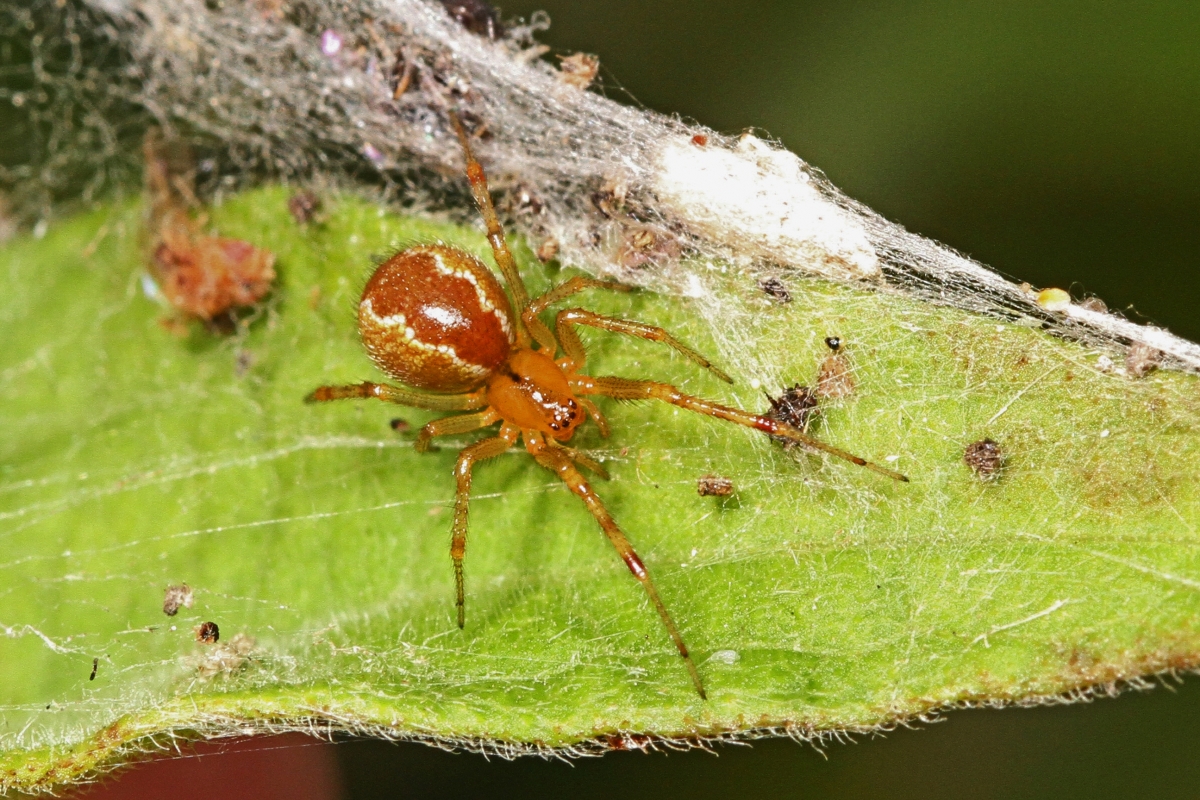Pitt Biologists Pry Into Spiders’ Personalities
PITTSBURGH—Along came a spider who sat down beside her and said, “It’s cool, just relax. I’m going to take care of our young while you, Miss Ornery, capture prey, defend our colony, and repair our web.”
came a spider who sat down beside her and said, “It’s cool, just relax. I’m going to take care of our young while you, Miss Ornery, capture prey, defend our colony, and repair our web.”
Colin Wright, a second-year PhD student in the University of Pittsburgh’s Department of Biological Sciences within the Kenneth P. Dietrich School of Arts and Sciences, recently coauthored a paper published in the Proceedings of the National Academy of Sciences delineating spiders’ roles within their colonies.
What’s unique about Wright’s work is that the spiders’ specialization (caregiver or hunter-warrior) isn’t determined by size or physical structure—as is the case, to give an example, with ants—but by their personalities. While most spiders are soloists , a few species, such as the Anelosimus studiosus (found in Tennessee, among other places) live in groups.
, a few species, such as the Anelosimus studiosus (found in Tennessee, among other places) live in groups.
Wright and his mentor Jonathan Pruitt, assistant professor of behavioral ecology at Pitt, along with Tate Holbrook of the College of Coastal Georgia, separated the docile spiders from the aggressive by observing how much space they demanded from fellow colony members. Aggressive females demand more space than docile ones.
The team ran the spiders through a series of tests, examining their performance in colony defense, prey capture, parenting skills, and web repair. The aggressive cohort was great at defending the web, capturing prey, and repairing their web. But they were awful parents.
“We didn’t know what the docile spiders did,” Wright says. “Were they just freeloaders?” No, it turns out, they were the ones who were capable of rearing large numbers of offspring.
didn’t know what the docile spiders did,” Wright says. “Were they just freeloaders?” No, it turns out, they were the ones who were capable of rearing large numbers of offspring.
In a separate study, Pruitt also created all docile, all aggressive, and mixed colonies of spiders.
The docile colonies died out first. No one was there to protect them from “parasite” spiders that picked off their young and stole their prey. The all aggressors died off second, as they became cannibalistic toward their young.
The mixed group thrived.
###
6/19/14/klf/cjhm
Media Resources
Schools of the Health Sciences Media Relations
For more information about Pitt's schools of dental medicine, health and rehabilitation sciences, medicine, nursing, pharmacy, and public health, click here >
To locate stories from health science schools prior to 2013, visit the UPMC news archives »
Urgent Question?
University of Pittsburgh news reps are available to answer urgent media inquiries. Outside of regular business hours (Mon-Fri, 8:30 a.m.-5 p.m.), please email us at media@pitt.edu.
News reps for University of Pittsburgh Health Sciences schools can be reached outside of regular business hours through the paging operator at 1+412-647-2345.


